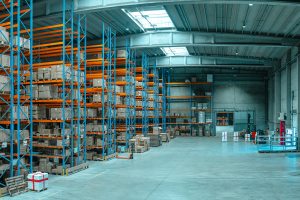Servitisation: A New Frontier in Manufacturing
More and more manufacturing companies are steering away from traditional hardware sales towards innovative servitised models where services or product functionalities are offered instead. The landscape of the industry is evolving with increased digitalisation and the integration of on-board processing and IoT connectivity in products, making servitisation models more appealing and feasible for manufacturers. This article by Transforma Insights delves deep into this transformative trend.
Understanding Servitisation
Servitisation, also known as XaaS or as-a-service, involves providing assets on a continual service basis rather than a one-time product sale. Customers pay based on the services consumed while the asset ownership remains with the provider, who is responsible for maintenance. For end-users, this shift means moving from a one-off capital expense to recurring operational expenses. Providers, on the other hand, transition from one-time sales to steady revenue streams.

Remote monitoring of assets is crucial for enabling such models, offering insights into asset location, performance, usage, and maintenance needs. IoT and AI play a key role in facilitating this monitoring. Embedded sensors in devices generate data on health and utilization metrics, empowering manufacturers to engage in predictive maintenance and address potential challenges proactively.
Servitisation has been gaining traction across various industries, from consumer products to industrial equipment. Companies like HP and Bosch have embraced service-centric models with offerings like ‘pay-per-copy’ and appliance subscriptions, respectively. Particularly beneficial for high-value equipment with low usage rates, servitisation focuses on intellectual property value rather than the physical asset.
Benefits of Servitisation

Servitised models offer stability amid market fluctuations, predictability in revenue streams, and enhanced customer relationships for manufacturers. It allows for flexible service offerings based on customer demand and promotes additional revenue streams through value-added services. Remote monitoring enhances asset visibility, enabling pre-emptive maintenance, reducing downtime and maintenance costs, and improving operational efficiency.
For end-users, servitisation eliminates upfront costs, offers flexible contracting terms, and allows for scalability as business needs evolve. It enables access to advanced technologies like robotics without significant initial investments, fostering market expansion and revenue growth.
Paving the Way for a Sustainable Economy
Servitisation aligns with the circular economy by promoting durable, high-quality products and efficient recycling practices. By extending product lifecycles, reducing waste, and encouraging prolonged usage, servitisation contributes to sustainability goals. Companies like HP have seen significant reductions in waste through service-oriented propositions.

In energy generation, servitised models like pay-per-use agreements promote renewable energy adoption by mitigating upfront costs and increasing accessibility. SunEdison’s ‘solar energy-as-a-service’ proposition enables consumers to pay for solar energy usage rather than investing in panels, fostering sustainability and energy access.
Challenges and Opportunities
Transitioning to a servitised model requires significant changes in business processes, customer service, and financial systems. OEMs must invest in resources to support this shift and address initial cash flow challenges. However, the long-term benefits in terms of revenue stability and market competitiveness outweigh these challenges.
A Bright Future Ahead
Servitisation holds the key to unlocking new business potential and operational efficiencies for OEMs and end-users alike. By embracing servitisation, manufacturers can revolutionise their business models and gain a competitive edge in the evolving market landscape.

Article by Suruchi Dhingra, Research Director at Transforma Insights
Join the conversation on Twitter: @IoTNow_ and explore more insights on IoT Now


